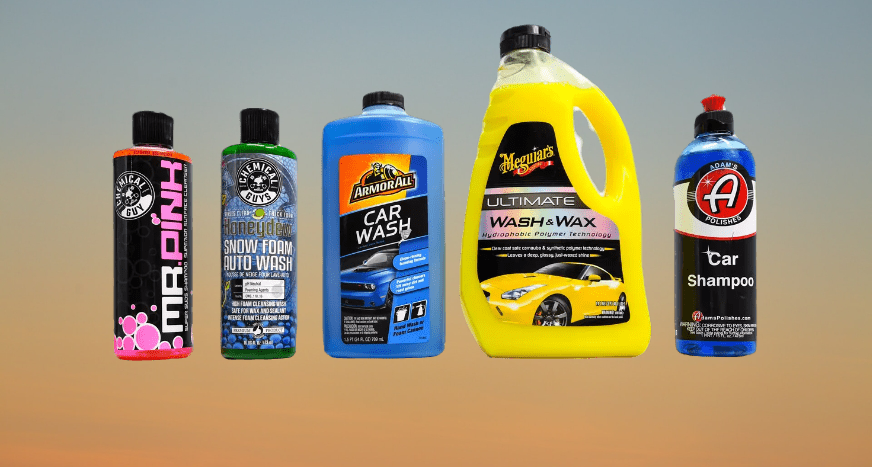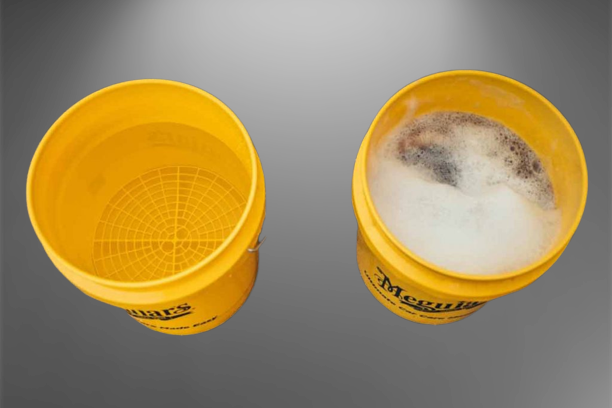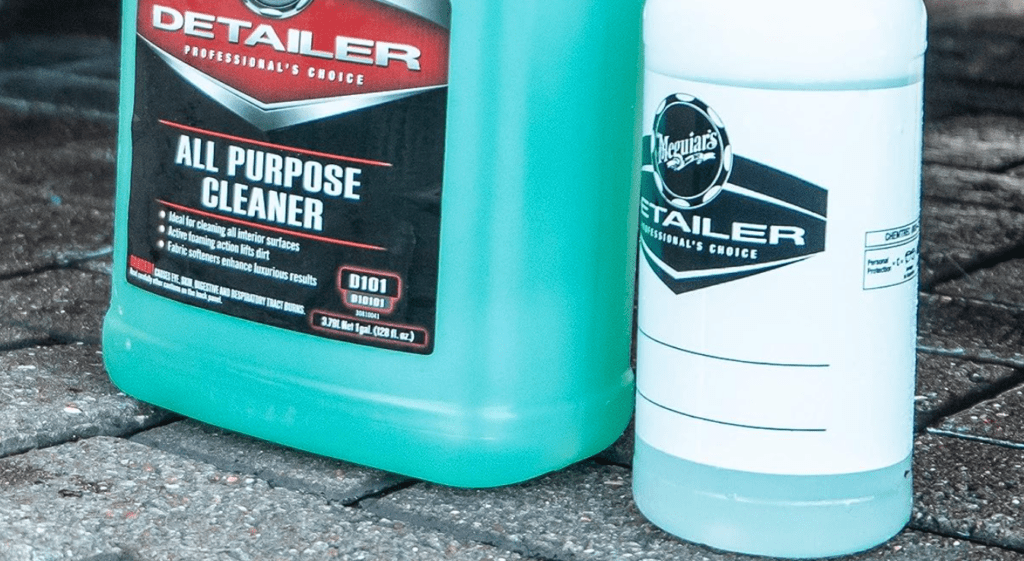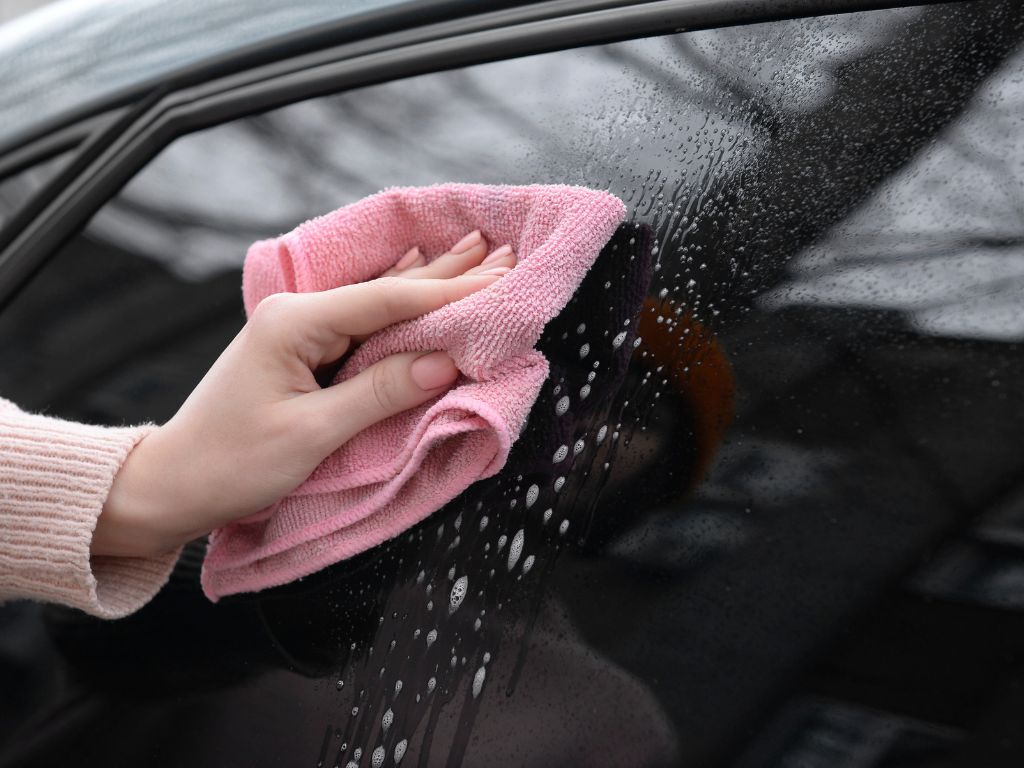Introduction
When it comes to keeping your car looking its best, regular washing is essential. However, with so many car washing products available on the market, choosing the right ones can be overwhelming. In this article, we will provide you with a comprehensive guide on what to use to wash a car effectively and maintain its pristine appearance.
The Importance of Using the Right Products
Before diving into the specifics, let’s understand why using the right car washing products matters. The right products not only ensure an effective cleaning process but also safeguard your car’s paint and finish. Inferior or harsh products can cause scratches, swirl marks, and even damage the protective wax layer.
What to Use to Wash a Car
Keeping your car looking its best becomes simple with the right tools and techniques at hand. Below, you’ll find a comprehensive list of products and methods to wash your car effectively and maintain its pristine appearance.
Selecting the Right Car Wash Soap
Start by choosing a high-quality, pH-balanced car wash soap. Avoid using household detergents, as they can strip off the wax and harm your car’s paint. Opt for a product specifically formulated for automotive use, as they are gentle on the paint while effectively lifting dirt and grime.

An appropriate example of the right car wash soap for the United States and Canada is a pH-balanced, biodegradable car wash solution. This type of soap is specifically formulated to effectively remove dirt and grime while being gentle on the car’s paint and the environment. Look for products that are free from harsh chemicals and additives, ensuring a safe and efficient car washing experience. Always read the labels and choose options that are suitable for the local environmental regulations and your vehicle’s needs.
Gentle and Effective Cleaning with Microfiber Wash Mitts

When it comes to washing your car, using a soft and non-abrasive wash mitt is crucial. Microfiber wash mitts are a popular choice, as they are gentle on the paint, trap dirt effectively, and reduce the risk of scratching.
The Power of a Quality Car Wash Shampoo
A good car wash shampoo can make a significant difference in your car washing routine. Look for a shampoo that provides lubrication, making it easier for the wash mitt to glide over the surface, and enhances the overall cleaning process.
Using Two-Bucket Washing Technique

To prevent dirt and debris from transferring back to the paint during washing, adopt the two-bucket washing technique. One bucket contains the soapy water for washing, while the other holds clean water for rinsing the wash mitt after each pass.
Optimal Drying with Microfiber Towels

Drying your car thoroughly is equally crucial to washing it. Invest in high-quality microfiber towels that effectively absorb water without leaving streaks or scratches on the paint.
Wheels and Tires Cleaning
Don’t forget to give your wheels and tires some attention. Use a dedicated wheel cleaner that is safe for your wheel’s finish and helps remove brake dust and grime effectively.
Choosing the Right Wheel Cleaner
Different wheels require different types of cleaners. Ensure you use the appropriate wheel cleaner for your specific wheel type – alloy, chrome, or painted.
Tackling Stubborn Dirt and Grime with All-Purpose Cleaners

For tough-to-remove dirt, consider using all-purpose cleaners. They are versatile and can be used on various surfaces, such as the engine bay and door jambs.
Dealing with Bird Droppings and Tree Sap
Bird droppings and tree sap can be particularly damaging to your car’s paint. Act quickly to remove them using a pre-wash solution or a spot cleaner.
Polishing and Waxing for That Extra Shine
To achieve a glossy and protected finish, polishing and waxing are essential. Polishing removes light scratches and imperfections, while waxing adds a layer of protection against environmental contaminants.
Interior Cleaning: From Carpets to Leather Seats
For a complete car detailing, don’t forget about the interior. Vacuum the carpets, clean the dashboard, and use appropriate products to condition and protect leather seats.
Glass Cleaning for Crystal Clear Visibility

Crystal clear windows are crucial for safe driving. Use a streak-free glass cleaner and microfiber cloth to clean the windows from the inside and outside.
Protecting Your Car’s Exterior: The Benefits of Ceramic Coatings
Ceramic coatings offer long-lasting protection for your car’s paint. They create a hydrophobic layer, making water and contaminants slide off easily.
Related post
The Dos and Don’ts of Car Washing

Dos:
- Use the Right Products: Use car-specific soap and cleaning products to avoid damaging the paint and finish.
- Choose a Shady Spot: Wash your car in a shaded area to prevent water and soap from drying too quickly, which can leave water spots.
- Rinse First: Before applying soap, rinse the car thoroughly with water to remove loose dirt and debris. This step helps to prevent any potential scratching while you’re washing the car.
- Use Microfiber Mitts or Cloths: Use soft, clean microfiber mitts or cloths to wash and dry your car. These materials are gentle on the paint and won’t scratch.
- Start from the Top: Begin washing from the top of the car and work your way down. This prevents dirt from the lower parts of the car from scratching the upper surfaces.
- Wash in Sections: Divide the vehicle into segments and clean it one section at a time. This ensures thorough cleaning and prevents soap from drying before rinsing.
- Use Two Buckets: Use one bucket with soapy water for washing and another with clean water for rinsing your mitt or cloth. This helps prevent transferring dirt back onto the car’s surface.
- Dry with a Soft Cloth or Microfiber: After rinsing, use a soft, clean microfiber cloth to dry the car. Pat gently instead of rubbing to avoid swirl marks.
- Apply Wax (Optional): If desired, apply a quality car wax after washing to protect the paint and enhance its shine.
- Clean Wheels Last: Clean the wheels and tires after washing the rest of the car. Wheel cleaning products can be harsh, and you don’t want any overspray on the painted surfaces.
Don’ts:
- Don’t Use Dish Soap: Avoid using regular household dish soap as it can strip off wax and damage your car’s paint.
- Don’t Use Harsh Brushes or Sponges: Avoid using abrasive brushes, old rags, or sponges that can scratch the paint.
- Don’t Wash in Direct Sunlight: Washing your car in direct sunlight can cause water spots due to the quick evaporation of water and soap.
- Don’t Let Soap Dry: Don’t let soap sit on the car’s surface for too long. Rinse off soap promptly to prevent residue.
- Don’t Use Dirty Water: Ensure that the water you’re using is clean. Dirty water can contain particles that scratch the paint.
- Don’t Forget Crevices and Grilles: Don’t neglect hard-to-reach areas like crevices, grilles, and emblems.Dirt and grime can build up in these regions.
- Don’t Use High-Pressure Water Directly: Avoid using high-pressure water directly on the paint, as it can push dirt into the surface and cause damage.
- Don’t Use Abrasive Cleaners: Avoid using abrasive cleaners, solvents, or degreasers on the car’s paint, as they can strip off the protective layers.
- Don’t Ignore Proper Drying: Don’t let your car air dry, especially in areas with hard water. Water spots can form and be difficult to remove.
- Don’t Overlook the Undercarriage: Don’t forget to occasionally clean the undercarriage to remove road salt, dirt, and grime that can lead to rust.
Following these dos and don’ts will help you maintain the appearance and integrity of your car’s paint and finish while ensuring a safe and effective washing process.
FAQs
- Is it safe to use regular household soap to wash my car? Using regular household soap is not recommended, as it can harm the car’s paint and finish.
- What type of car wash soap is best for my vehicle? Opt for a pH-balanced car wash soap specifically designed for automotive use to ensure gentle cleaning.
- Is it safe to use a power washer on my car? Yes, but use a power washer with a low-pressure nozzle to avoid damaging the paint.
- Can I use the same sponge for the body and wheels of the car? It’s better to use separate cleaning tools for the body and wheels to prevent scratching.
- Do I have to apply wax to my car after each wash? While not necessary after every wash, regular waxing every few months helps protect the paint.
- What’s the best way to clean stubborn stains on the car’s exterior? All-purpose cleaners can effectively tackle stubborn stains and grime on various surfaces.
- Should I clean the engine bay during car washing? Cleaning the engine bay is a good practice, but use a specialized engine cleaner and avoid electrical components.
- Can I use household glass cleaner on my car’s windows? It’s best to use a dedicated automotive glass cleaner for streak-free results.
- What’s the benefit of using a microfiber wash mitt? Microfiber wash mitts are soft, trap dirt effectively, and reduce the risk of scratching the paint.
- How often should I wash my car to maintain its appearance? Regularly washing your car, ideally once a week, helps keep it looking clean and fresh.



